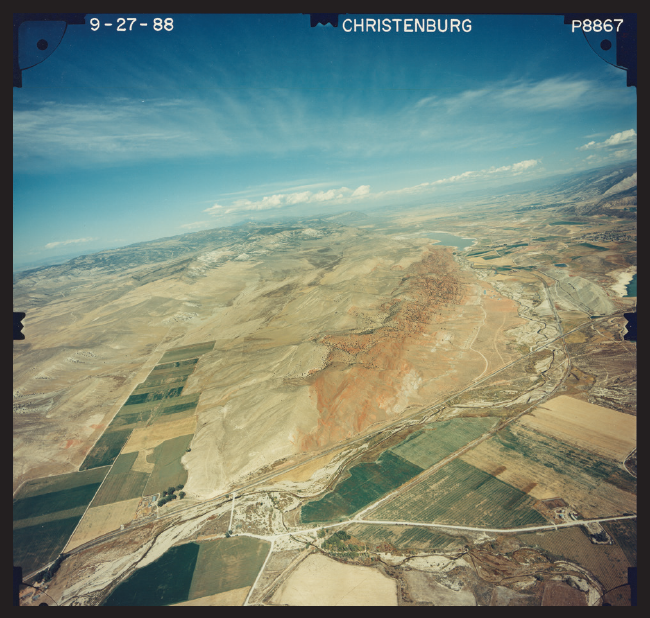The New Utah Aerial Imagery Database: A Statewide Resource of Historical Aerial and Related Imagery
by Steve D. Bowman
The Utah Geological Survey (UGS) recently released the new online Utah Aerial Imagery Database (https://imagery.geology.utah.gov) containing aerial photography (air photos) and related imagery dating from 1935 to 2020; about one-half of the collection dates before 1960. As of December 2021, the database contains over 1,200 imagery projects totaling over 277,000 air photos and 4,300 aerial project index sheets. The database is the most comprehensive publicly accessible online aerial imagery system at a state level in the United States.
Imagery and Related Items in the Utah Aerial Imagery Database as of October 2021
| Database Category | Totals |
|---|---|
| Air Photos | 48,332 |
| Externally Linked Air Photos | 228,682 |
| Index Sheets | 4,378 |
| Camera and Lens Reports | 1,705 |
| Aerial Project and Other Documents | 116 |
| Total Items: | 283,218 |
| Imagery Collections: | 1,231 |

Oblique color air photo view of the Gunnison River looking north from the 1988 P8867 collection and acquired by the UGS.
Historical aerial imagery is critical in the investigation of infrastructure hazard vulnerability; watershed and land management; engineering, environmental, and geologic projects; and past land uses to understand how the landscape and man-made features have changed over time and how they may affect current and future infrastructure. Nearly every infrastructure planning and design project uses aerial imagery to help understand the land surface, its features, and how they have changed over time. The imagery is also used by the public exploring Utah’s backcountry, seeing what their property looks like in an aerial view, and dealing with property boundary location issues. The UGS also uses aerial imagery in nearly all its applied geologic research projects.
Most of the frames in the database were acquired in stereoscopic mode, meaning successive frames overlap and create stereo pairs that provide a three-dimensional (3D) image when viewed with a stereoscope. Other related imagery includes frames that are low-sun-angle photographs acquired during the morning or afternoon when shadows highlight certain topographic features, such as fault scarps, or oblique photographs taken at a non-vertical angle to the ground, like a panorama.
Various federal government agencies originally acquired most of these frames for agricultural and/or forest management purposes. The database also includes all UGS-acquired imagery. Aerial and related imagery is separated in the database by acquisition agency and the project code or name the agency assigned to the project as a collection. The project code consists of the year or year range the images were acquired and the specific project coding.
The externally linked air photos are contained in the U.S. Geological Survey (USGS) Earth Resources Observation and Science Center (EROS) EarthExplorer system (https://earthexplorer.usgs.gov/). Upon searching and discovering these photos in the Utah Aerial Imagery Database, the user clicks the Download button and is redirected to the EarthExplorer website to complete the download where a free EarthExplorer user login is required.
Imagery in the database can be easily searched for using the Map Search feature. The user simply draws a search box and all imagery within the search box will be shown as thumbnail images, a text list, or as markers on a map. Markers on the map are color coded based on year ranges of the imagery. When markers overprint other markers in a search area, a green dot is displayed showing the number of clustered markers. Clicking on the green dot or zooming further into the map will show the clustered markers. In addition, imagery may be searched for using metadata that individually describes the images, such as the Project Code, Project Name or individual roll and frame numbers, among other metadata.
Additional imagery and related items are being routinely added to the database. Donations of imagery are much appreciated, so the database may be more complete and serve as an easily accessible public archive.












